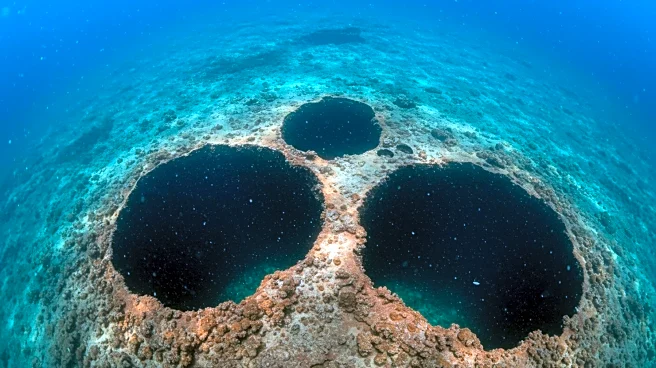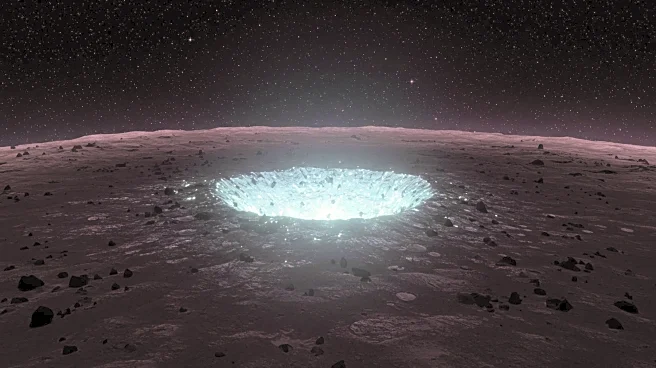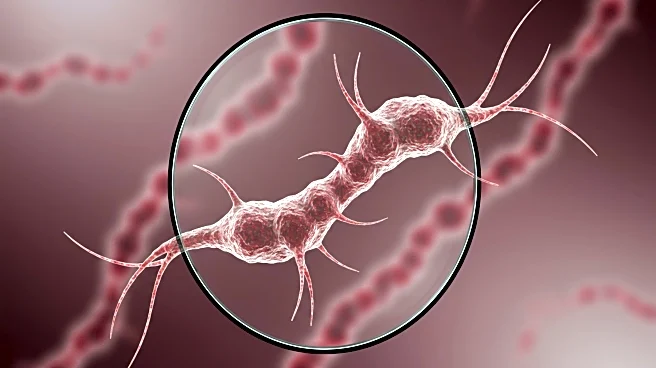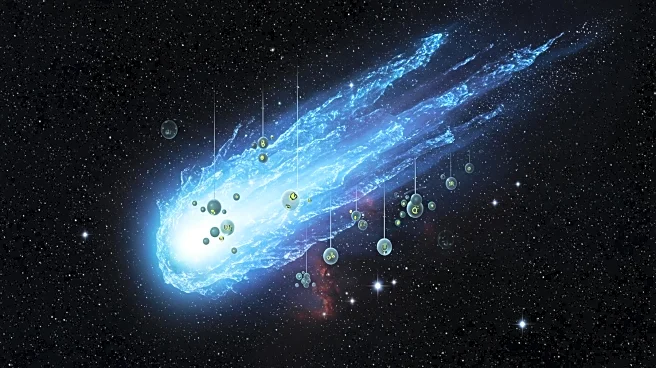What is the story about?
What's Happening?
Scientists have uncovered massive brine pools in the depths of the Red Sea, which function as lethal zones for marine life due to their hypersaline and oxygen-deprived nature. These pools, located thousands of feet beneath the surface, immobilize or kill any creature that enters them. Despite their deadly nature, these pools provide valuable insights into Earth's history and the potential for life beyond our planet. The study, published in Nature Communications, highlights the extreme environments of these pools, which mirror hostile conditions found on distant water worlds in the universe. The brine pools are isolated and located at extreme depths, making them ideal for studying how life could have originated in such hostile environments.
Why It's Important?
The discovery of these brine pools is significant as it offers a glimpse into the conditions that may have nurtured early microbial life on Earth billions of years ago. The extreme, anoxic conditions in these pools resemble those that early life forms may have encountered in the primordial oceans of our planet. Studying these environments can help scientists understand the origins of life on Earth and guide the search for life on other 'water worlds' in our solar system and beyond. The unique predator-prey relationship in these pools also highlights the adaptability of life to extreme conditions, providing insights into life's resilience and potential to survive on other planets.
What's Next?
The research into the brine pools can help scientists develop models for extraterrestrial environments that could sustain life. These environments might exist in the subsurface oceans of moons like Europa or even in distant exoplanets within our galaxy. As exploration continues in the depths of the Red Sea, scientists may uncover more secrets about the origins of life, both on Earth and in the wider universe.
Beyond the Headlines
The brine pools serve as time capsules of Earth's early oceanic conditions, preserving ancient ecosystems that could resemble the earliest stages of life on Earth. By studying these environments, scientists can uncover more about the microbial ecosystems that may have formed at the dawn of life on Earth. The pristine nature of the sedimentary layers in the brine pools allows scientists to study undisturbed layers, revealing much about how Earth's earliest microorganisms lived and thrived in a world with no oxygen.
AI Generated Content
Do you find this article useful?











